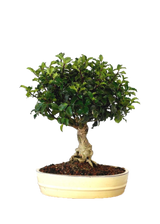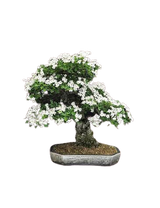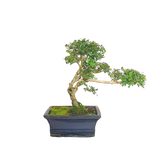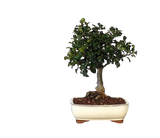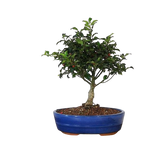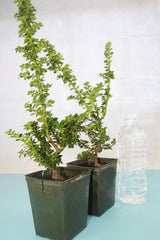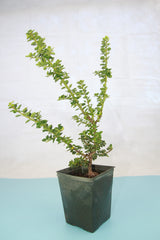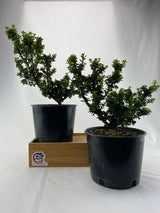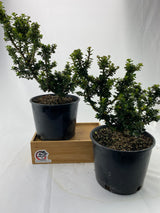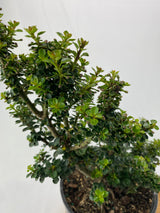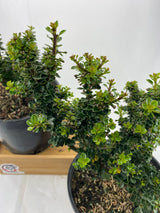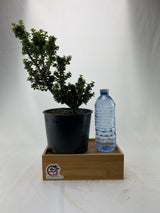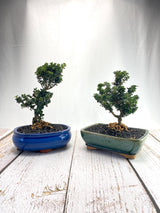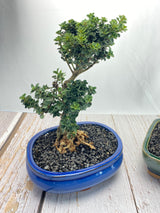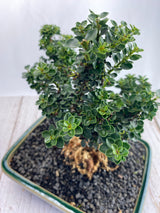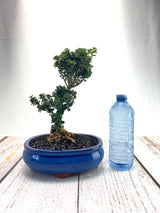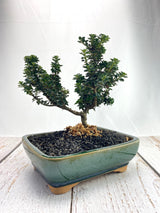Japanese Holly
The Japanese Holly is really good Bonsai material and is very sought out for its naturally small leaves, white flowers and small black berry-like fruits. Although the holly only produces fruit when there are both male and female plants by each other and both are flowering at the same time.
The Japanese holly thrives outdoors in the spring, summer and fall and like most other Bonsai, will not tolerate the Canadian winters. Please see our winter care guide for tips on caring for your holly in the winter.
The Japanese Holly is also known to do well indoors, year-round. Although this will require a little more effort. Ensuring to place it on a humidity tray that is constantly kept with water. As for watering the Japanese Holly, it's best to not let it dry out completely, the Holly likes moisture, just make sure that it is in very well-draining soil, that will protect the roots from root rot.


















